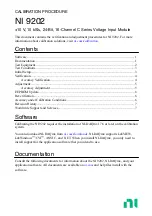
Installing and putting a TIM into operation
4.7 Startup activities of the TIM module
Station control system
172
System Manual, 07/2009, C79000-G8976-C178-07
6\VWHPGDWDEORFNVWKDW
KDYHWREHWUDQVIHUUHG
RQWRWKH7,0DWV\VWHP
VWDUWXS
Figure 4-33 System data blocks (SDBs) in the program directory of the TIM
The SDBs are transferred to a TIM as follows:
●
Over the MPI interface of the TIM 4 if this is installed as a stand-alone device.
●
With a TIM 3 without MPI interface and with a TIM 4 installed as a CP in an S7-300, use
the MPI interface of the CPU via which the TIM is accessible on the S7-300 backplane
bus and can be reached to load the SDBs.
●
With the TIM 3V-IE, TIM 3V-IE Advanced and TIM 4R-IE via the MPI interface of the CPU
or via the Ethernet interface.
The SDBs may only be transferred after the TIM has completed its startup. The TIM's LEDs
indicate when startup is completed. For more detailed information, refer to the section
Startup activities of the TIM.
Note
With the TIM 3V-IE variants and the TIM 4R-IE, the SDBs can be stored on the TIM or the
S7-300 CPU. This is specified in the parameter assignment of the module. If you decide to
store the SDBs on the TIM, the SDBs must be transferred to the module as described above.
If the SDBs are stored on the CPU, it is not necessary to transfer the SDBs separately. The
TIM receives the SDBs from the CPU during the common startup of the modules in the S7-
300 rack.
4.7
Startup activities of the TIM module
4.7.1
Startup of the TIM 3V-IE variants
Introduction
During startup, the LEDs on the front panel of the TIM 3V-IE variants have a different
significance than during normal operation. They are optical indicators of the various startup
phases and provide detailed information about any errors detected during startup. The only
















































